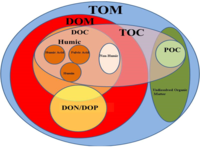
Photo from wikipedia
Although there is greater awareness of spatial variability of factors affecting plant growth, regression methods with residuals independently and identically distributed, are still used. Thus, we compared spatial and non-spatial… Click to show full abstract
Although there is greater awareness of spatial variability of factors affecting plant growth, regression methods with residuals independently and identically distributed, are still used. Thus, we compared spatial and non-spatial regression models in evaluating the relationships between tree growth of different species and clones and environmental factors in a polycyclic tree plantation of Italy (about 20-ha size). Soil samples were collected at 106 georeferenced locations and analyzed for the main soil parameters; trunk diameter was measured for 2513 trees and used as a proxy of plant growth; geostatistical procedures were applied to soil data so as to map soil characteristics. Poplar and alder cover indices and altitude as a proxy of groundwater depth were estimated at each tree location. The study provides evidence that considering spatial correlation can: (i) reduce the possibility of falsely declaring significant effects (Type I errors), and (ii) perform more precise predictions. Overall the model choice influenced the identification of significant regressors and the trunk diameter predictions, leading to implications on management decisions, quantitative estimation of wood productions and species comparisons. The spatial model showed which specific factors had a significant impact on plant growth and for which of them spatial variability might be worth investigating: the impact of soil texture on tree growth was evident, with difference among the investigated species and clones; soil organic carbon content affected poplar tree growth but not that of the valuable species; alder cover promotes development of trees; unlike the poplar trees, the trunk growth of the valuable species was limited by carbonate content.
Journal Title: Agroforestry Systems
Year Published: 2018
Link to full text (if available)
Share on Social Media: Sign Up to like & get
recommendations!